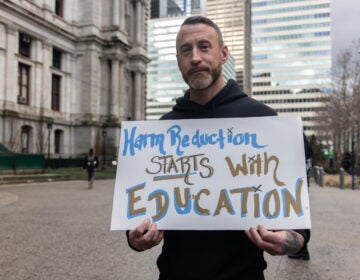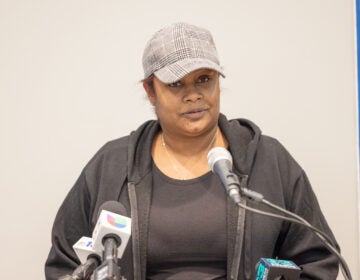As Philly clears another encampment, what happened to homeless in previous sweep?
Listen 4:03-
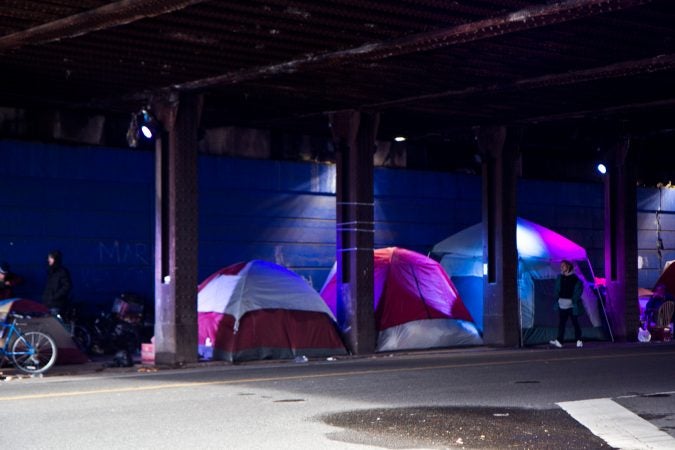
The city of Philadelphia is once again clearing out camps of people in Kensington like the one at Frankford and Lehigh Avenues. (Kimberly Paynter/WHYY)
-
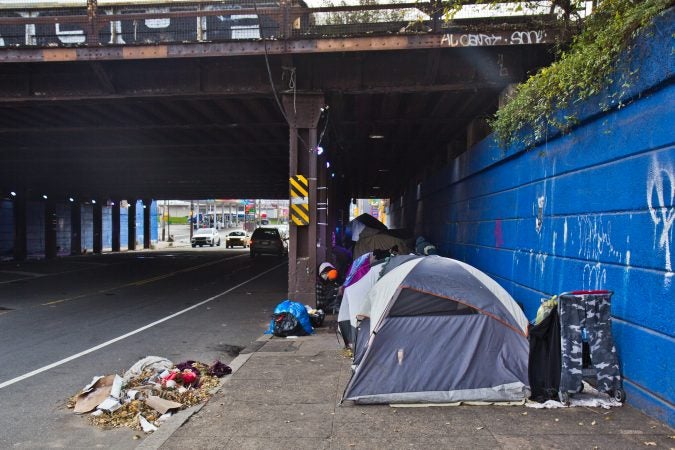
The city of Philadelphia is once again clearing out camps of people in Kensington like the one at Frankford and Lehigh Avenues. (Kimberly Paynter/WHYY)
-
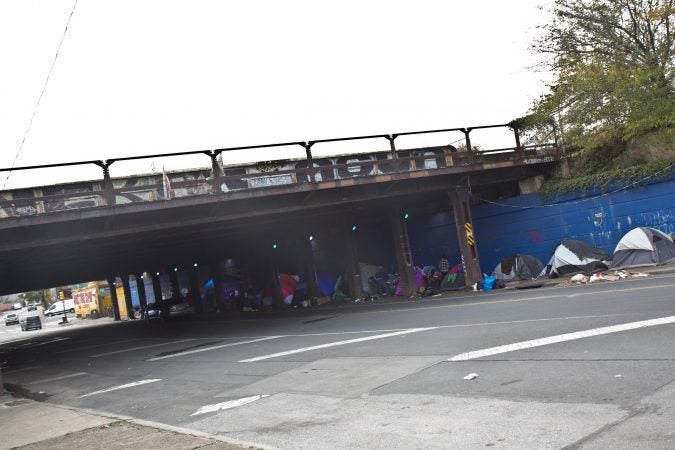
The city of Philadelphia is once again clearing out camps of people in Kensington like the one at Frankford and Lehigh Avenues. (Kimberly Paynter/WHYY)
On Monday afternoon, a row of tents ran end to end in the Frankford Avenue underpass just north of Lehigh Avenue in Philadelphia’s Kensington neighborhood. Some were draped with blankets to fend off the cold.
Except for the cars whizzing by, the scene was fairly calm at the encampment, where more than 100 people live.
That afternoon, a few days before the city planned to evict people living under the bridge, just a handful of people were visible, hanging around outside their tents.
“Most of our base group is still here, and a lot of them are just going to move over to Emerald bridge,” said a man named Ryan, who said he has called this place home for six months.
He said outreach workers had found a place for him in a shelter, but he had mixed feelings about moving on. He said people look out for each other at the camp.
“But a lot of people from under the Kensington bridge are doing good through outreach and stuff,” Ryan said. “They’ve gone on to bigger and better things, and got help with their addiction.”
He was referring to one of the first two encampments the city cleared in the spring at Kensington Avenue, during a pilot program designed to meet the complex needs of people who are homeless and addicted to opioids. The goal was to bring as many as possible into “low-barrier” shelters that don’t require getting clean to enter. Once there, people were able to access treatment and housing programs.
The city, which plans to take the same approach when it shuts down the Frankford Avenue underpass Thursday, has been doing intensive outreach to get as many people off the streets as possible.
But as before, there’s a risk that some will simply scatter to other sites on the margins of the neighborhood.
The process of healing and helping
As the city prepared to close the Frankford encampment, homeless services director Liz Hersh spoke about outcomes from the pilot that shed light on how well the city’s approach has worked so far.
When people were forced out of encampments at the Kensington Avenue bridge and Tulip Street, outreach workers listed the names of the displaced. The Office of Homeless Services is still tracking the 189 people on that list. Hersh said that’s no easy task, requiring coordination among shelters, housing programs, treatment providers, and the corrections system.
“We’ve never tried to integrate this kind of data,” Hersh said. “We’ve never tried to follow this number of people who have very complex lives.”
Hersh said that makes it difficult to provide a snapshot of exactly where people who used to live under the bridges have ended up. But the data her office has collated provides a sketch of how the 189 have fared.
“What we know is that 140 people came into one of our low-barrier sites,” she said. “Fifty-eight people accessed inpatient treatment […] 26 are in permanent housing.”
Hersh said that 29 more are transitioning out of the low-barrier shelters into long-term housing. But more than one-quarter of the people they’re tracking — 54 — have ended up back on the streets. Ten more went to jail, and two have died.
For people struggling with opioid addiction on the streets, the journey in recovery doesn’t always move in a straight line, Hersh said.
“What we’re working through is just a process of healing, and helping people become healthy, and thinking about their lives differently so that they can start to move forward,” Hersh said.
Big challenges remain as the city moves to clear more encampments and address the broader issue of opioid-related homelessness in Kensington. The street homeless population has more than doubled there in the past year — numbering more the 700 — and there aren’t enough low-barrier shelters to meet the demand. The city is close to securing a site for another one it’s committed to opening by the end of the year, in time for its Jan. 15 deadline for clearing the last major encampment at Emerald Street.
In the meantime, Hersh said, 40 beds at a shelter run by Prevention Point have been set aside for people residing at the Frankford Avenue bridge. While as many as 123 people have been counted at the bridge recently, Hersh said the population changes from night to night, and she expects there to be enough shelter spaces for a core group of about 50 residents at the bridge.
Kate Perch, Prevention Point’s director of homeless services, said about 15 people have come in so far. She said lessons learned from the previous encampment closures have prepared her staff for handling the bigger influx expected as the camp closes.
“We learned very early on that we really needed to get providers on site to work with our folks,” she said.
Perch said that could ease their next step into a housing or treatment program, which she hopes will lead to fewer ending up back on the street.
WHYY is your source for fact-based, in-depth journalism and information. As a nonprofit organization, we rely on financial support from readers like you. Please give today.


